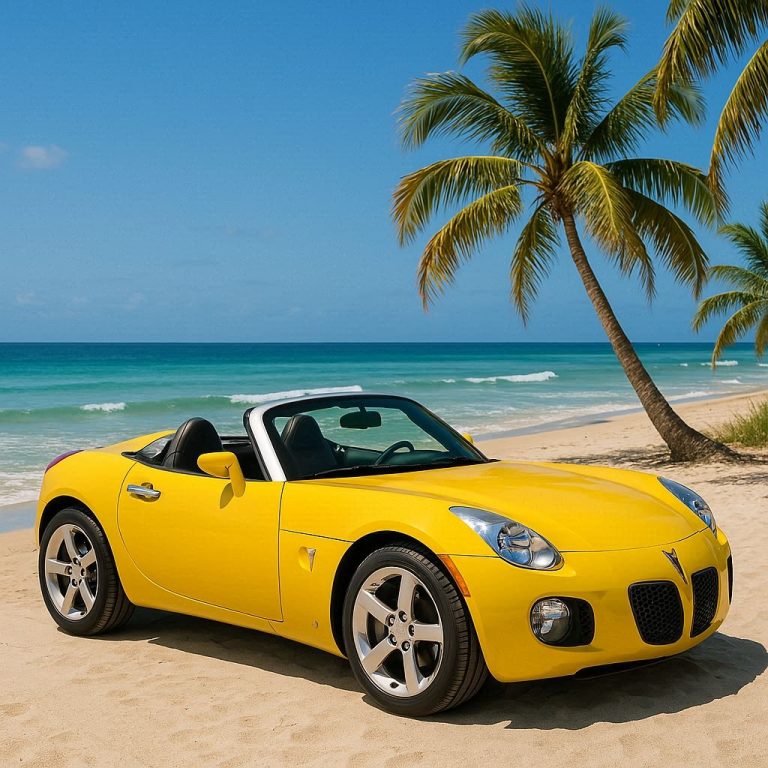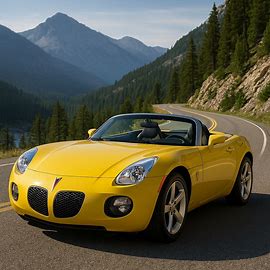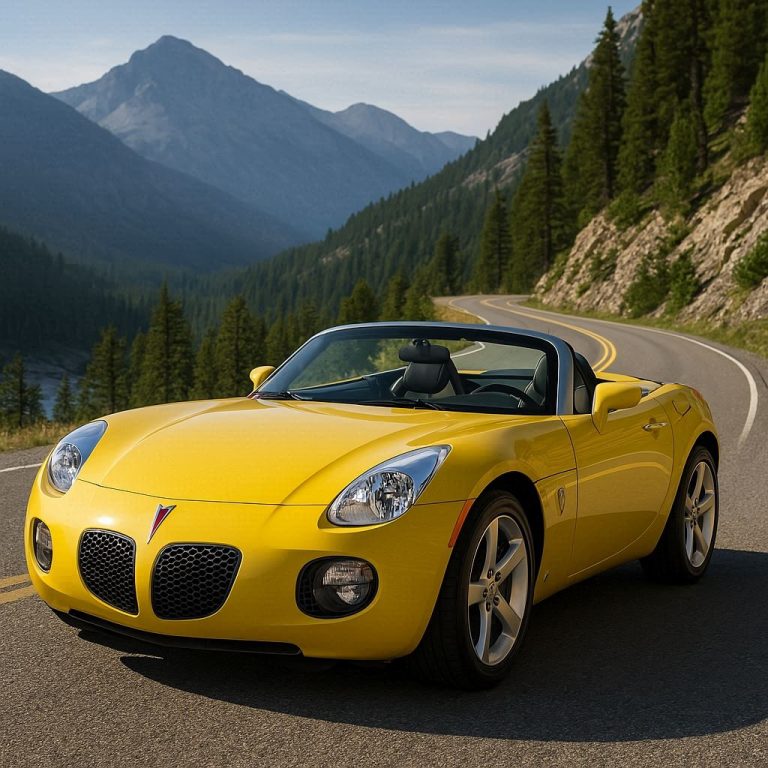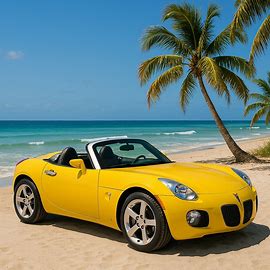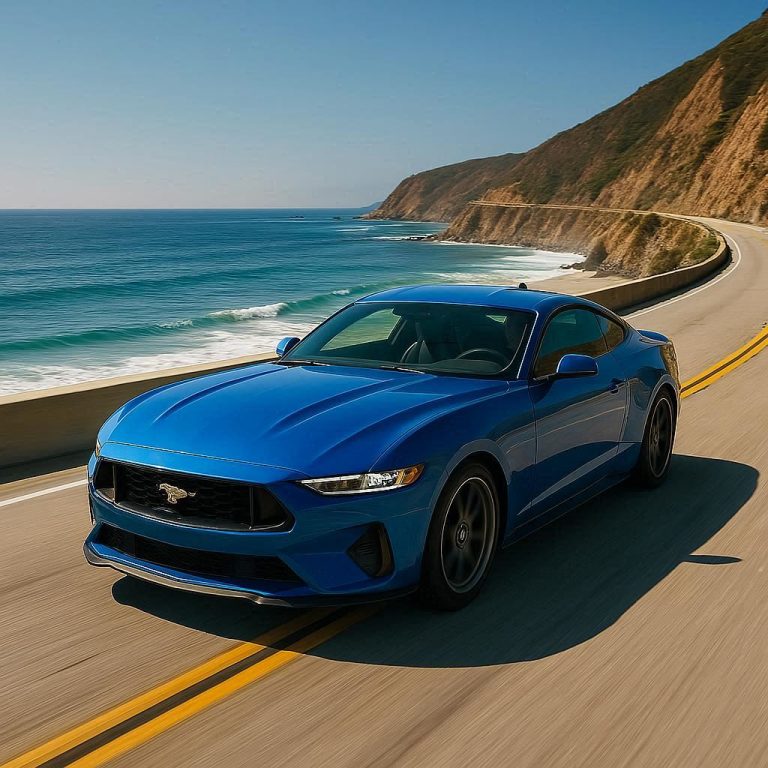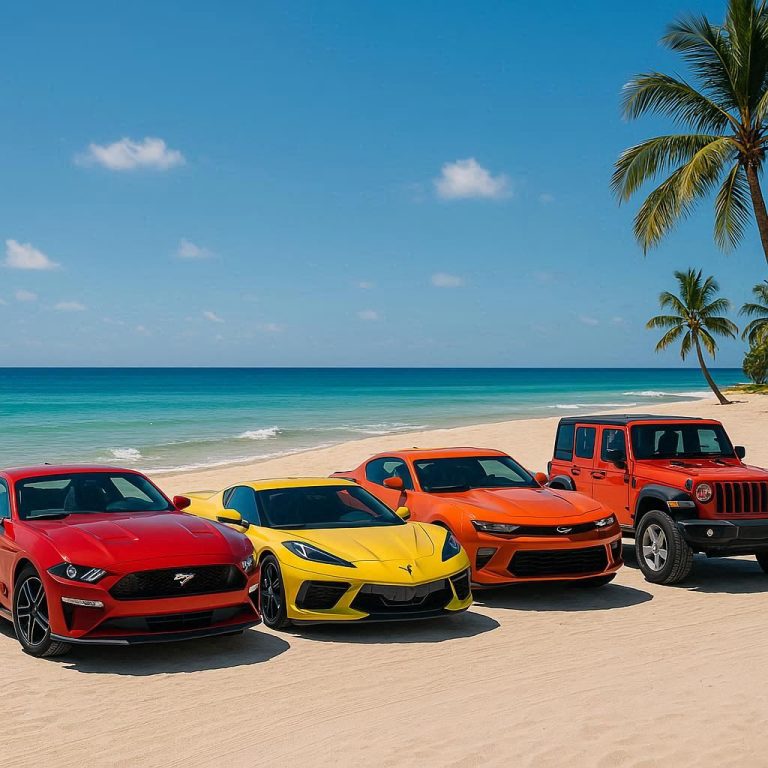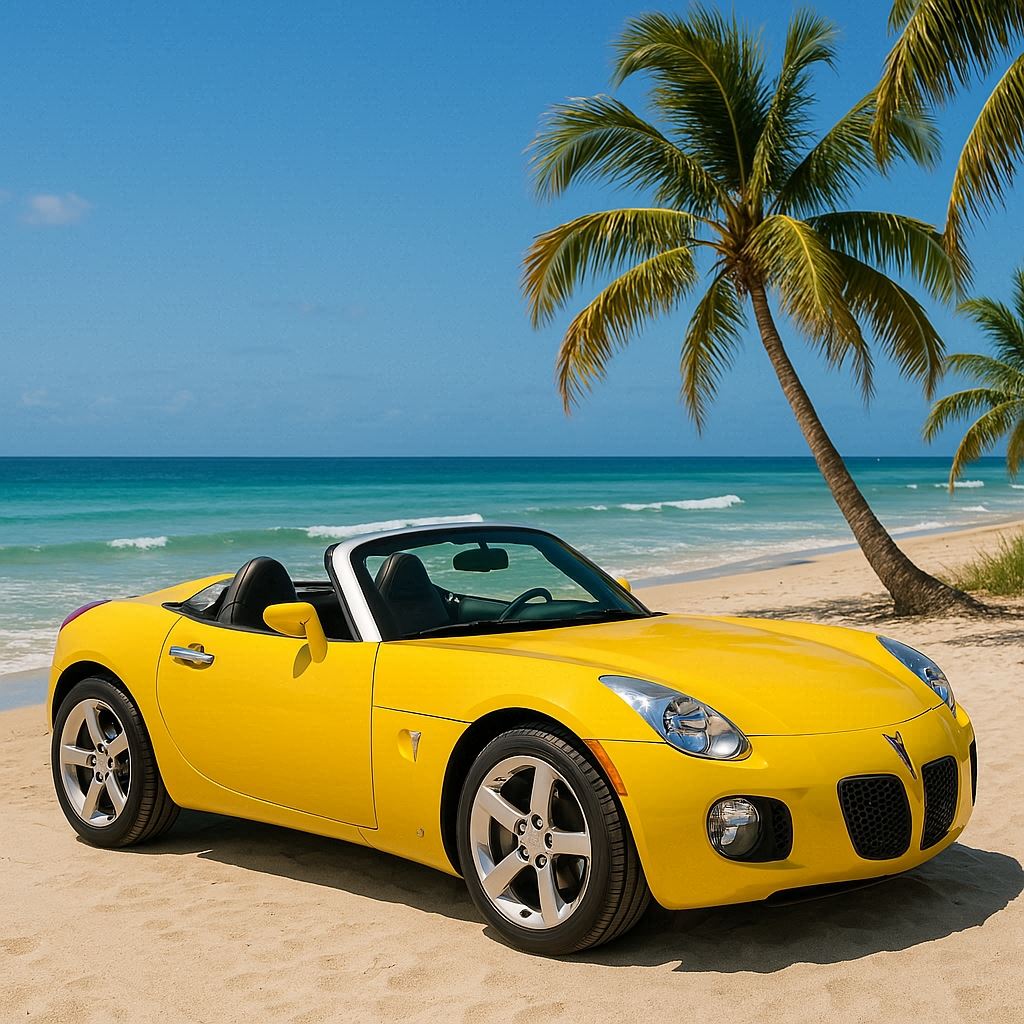
Chapter 3 Regional Car Culture Landscapes
Southern Truck Culture: Pride and Performance
In the South, a truck isn’t just a vehicle; it’s a statement, a symbol woven into the very fabric of Southern identity. From the rolling fields of farmland to the bustling city streets, trucks represent a deep connection to the land, a hardworking spirit, and a sense of pride that resonates throughout the region. This chapter digs into the heart of Southern truck culture, exploring its roots, its significance, and the unique ways Southerners have transformed these machines into expressions of themselves.
The story of Southern truck culture is inextricably linked to the region’s history. Agriculture has always been a cornerstone of the Southern economy and lifestyle, and the truck emerged as an indispensable tool for farmers. Early trucks were workhorses, hauling crops, livestock, and supplies across vast distances. As industry developed, trucks became vital for logging, construction, and transportation. These practical applications instilled a sense of respect and appreciation for the rugged capability of trucks.
Beyond their functional role, trucks gradually took on a deeper cultural meaning. They became symbols of self-reliance, embodying the independent spirit often associated with the South. A truck represented the ability to tackle tough jobs, navigate challenging terrain, and provide for oneself and one’s family. This image resonated strongly with Southerners, who valued hard work, resilience, and a connection to the land. The image of the truck evolved beyond its utilitarian purpose; it became an emblem of Southern values.
Today, this connection continues to influence Southern truck culture. Trucks remain a practical choice for many Southerners, but they’re also a source of personal expression and regional pride. You’ll see this pride reflected in the countless ways Southerners customize their trucks, transforming them into rolling works of art that reflect their personalities and local aesthetics.
Lift kits are perhaps the most recognizable feature of Southern trucks. Raising the body and suspension creates a commanding presence, both on and off the road. These modifications aren’t just for show, though. They improve ground clearance, allowing trucks to navigate rough terrain, ford streams, and handle the challenges of rural life. The higher vantage point also provides better visibility, a practical advantage on busy roads and highways.
Beneath the lifted frames lie extensive suspension modifications, designed to enhance both performance and ride quality. Heavy-duty springs, shocks, and control arms improve stability, handling, and load-carrying capacity. These upgrades are crucial for trucks that regularly haul heavy loads or navigate uneven surfaces. The focus is on creating a vehicle that is both capable and comfortable, able to handle the demands of work and leisure.
Of course, Southern truck culture isn’t just about brute strength and rugged capability. It’s also about performance. Many owners invest in engine upgrades, exhaust systems, and other modifications to boost horsepower, torque, and overall performance. Cold air intakes improve airflow, allowing the engine to breathe more efficiently. Performance chips and tuners optimize engine settings, increasing power and fuel economy. Exhaust systems not only enhance performance but also produce a distinctive roar, a sound that is music to the ears of many truck enthusiasts.
Aesthetic customization is where Southern truck culture truly shines. From bold paint jobs to intricate detailing, Southerners express their individuality through their trucks. Custom grilles, bumpers, and lighting add unique touches, transforming a standard truck into a one-of-a-kind creation. Chrome accents are popular, adding a touch of shine and sophistication.
The South’s unique connection to the land is often reflected in truck aesthetics. Camouflage patterns are common, particularly in rural areas where hunting and outdoor activities are popular. Confederate flags, though controversial, sometimes appear, representing a complex and contested part of Southern heritage for some. These visual cues are powerful expressions of regional identity, connecting the truck to the Southern landscape and its history.
Inside the cab, customization continues with upgraded sound systems, leather upholstery, and personalized accessories. Many owners install high-end stereos with powerful subwoofers, turning their trucks into mobile concert halls. Leather seats provide comfort and luxury, while custom floor mats and trim add a personal touch. These interior modifications create a comfortable and inviting space, reflecting the owner’s individual style.
The Southern truck scene is thriving and you will see it at the many regional events. These gatherings are more than just car shows; they’re celebrations of Southern culture, bringing together enthusiasts from all walks of life to share their passion for trucks.
One of the biggest is the annual Lone Star Throwdown in Conroe, Texas. While Texas isn’t technically considered part of the “Deep South,” its truck culture is intertwined and shares many similarities. This massive event attracts thousands of trucks from across the country, showcasing the latest trends in customization and performance. The atmosphere is electric, with live music, vendor booths, and competitions. It’s a place to see and be seen, to connect with fellow enthusiasts, and to celebrate the culture of trucks.
Smaller, more local events happen all year round, often held in rural areas and small towns. These gatherings offer a more intimate experience, allowing enthusiasts to connect on a personal level. Swap meets provide opportunities to buy, sell, and trade parts and accessories. Cookouts and barbecues are common, reflecting the South’s strong culinary traditions. These local events are the heart and soul of Southern truck culture, fostering a sense of community and camaraderie.
Truck clubs play a crucial role in organizing events and promoting the culture. These clubs bring together like-minded individuals, providing a platform for sharing knowledge, offering support, and organizing group activities. Club members often work together on projects, helping each other customize their trucks and improve their skills. The clubs also serve as a social network, connecting people who share a common passion.
Online forums and social media groups have expanded the Southern truck community, connecting enthusiasts from different states and regions. These platforms provide a space for sharing photos, asking questions, and discussing the latest trends. Online communities also facilitate the organization of events and meetups, further strengthening the bonds between enthusiasts.
In conclusion, Southern truck culture is more than just a hobby; it’s a way of life. It’s a reflection of the region’s history, its values, and its unique identity. Trucks are symbols of independence, hard work, and a deep connection to the land. The countless ways Southerners customize their trucks are expressions of individuality and regional pride. The vibrant events and communities that surround the truck scene are testaments to the enduring power of this unique automotive culture. They are a rolling representation of the heart and soul of the South.
California Innovation: Automotive Creativity Unleashed
California, a state synonymous with sunshine, innovation, and a rebellious spirit, hasn’t just embraced car culture; it’s actively reshaped it, leaving an indelible mark on the American automotive landscape and beyond.
From the sun-drenched speedways of the early 20th century to the sleek design studios of Silicon Valley today, California has been a constant incubator for automotive dreams. The story begins with hot rodding, a distinctly Californian creation born from a desire for speed and individuality. After World War II, young veterans, eager to put their mechanical skills to use, began modifying pre-war cars, stripping them down, souping up their engines, and transforming them into lean, mean racing machines. Dry lake beds like El Mirage and Bonneville (though technically in Utah, heavily influenced by the California scene) became proving grounds for these homemade rockets, attracting hordes of enthusiasts eager to push the limits of speed. These weren’t just backyard mechanics; they were pioneers, forging a new kind of automotive culture built on ingenuity, community, and the pursuit of adrenaline.
This hot-rodding spirit laid the foundation for California’s broader automotive influence. The burgeoning aerospace industry in Southern California provided a unique environment where advanced engineering and design principles were readily available. Concepts and materials developed for aircraft found their way into automotive applications, contributing to advances in engine technology, aerodynamics, and materials science. The concentration of skilled labor and technological know-how created a hotbed for automotive innovation, attracting talent from across the country and around the world.
Later came the rise of custom car culture. Figures like George Barris and Ed “Big Daddy” Roth, became legends by crafting outrageous, one-of-a-kind creations. Barris, known for his meticulous craftsmanship and collaborations with Hollywood, designed iconic vehicles like the Batmobile and the Munster Koach. Roth, with his wild imagination and signature Rat Fink character, pushed the boundaries of automotive art, creating grotesque and fantastical machines that challenged convention. These customizers transformed cars into rolling sculptures, reflecting the individualism and artistic flair that defined California’s cultural landscape.
California’s influence extends far beyond hot rods and custom cars. The state’s diverse population has fostered a rich tapestry of automotive subcultures, each with its unique style and traditions. Lowriding, with its roots in the Chicano community, is a prime example. Lowriders are more than just customized cars; they’re rolling works of art that celebrate cultural heritage, community pride, and artistic expression. These meticulously crafted vehicles, often vintage Chevrolets and other classic models, are lowered to the ground, adorned with intricate paint jobs, and equipped with hydraulic systems that allow them to “dance.” Lowriding is a vibrant cultural movement, with deep roots in California’s history and a powerful message of identity and resistance.
The import tuning scene is another important strand in California’s automotive tapestry. Beginning in the late 20th century, this subculture embraced Japanese and European cars, modifying them for performance and style. Import tuners focused on enhancing engine power, improving handling, and creating visually striking aesthetics. Body kits, spoilers, and aftermarket wheels transformed ordinary cars into high-performance machines. This scene embraced new technologies and performance modifications, pushing the boundaries of automotive engineering. Car clubs and racing events provided venues for enthusiasts to display their vehicles and test their skills.
And of course, no discussion of California car culture would be complete without acknowledging the impact of Silicon Valley. The tech industry’s relentless pursuit of innovation has spurred the development of electric vehicles, autonomous driving systems, and other advanced automotive technologies. Companies like Tesla, based in Palo Alto, have revolutionized the electric car market, challenging traditional automakers and accelerating the transition to sustainable transportation. Silicon Valley’s influence extends beyond electric cars. Tech companies are also developing autonomous driving systems, which promise to transform the way we commute and travel. These technologies, combined with new business models like ride-sharing and car-sharing, are poised to reshape the automotive landscape.
California’s commitment to environmental sustainability has also shaped its automotive culture. The state has been a leader in promoting clean air and reducing greenhouse gas emissions, implementing stringent regulations on vehicle emissions and encouraging the adoption of electric and hybrid vehicles. These policies have spurred innovation in automotive technology, leading to the development of more fuel-efficient engines, advanced battery systems, and alternative fuels. California’s focus on sustainability has also influenced design philosophies, leading to the creation of more environmentally friendly vehicles that minimize their impact on the planet. The state’s government continues to incentivize the purchase of EVs through rebates and tax credits and invest heavily in charging infrastructure. This proactive approach has made California the largest EV market in the United States and a global leader in sustainable transportation.
The state is also home to some of the world’s leading automotive design schools and workshops. Institutions like the ArtCenter College of Design in Pasadena have trained generations of automotive designers, shaping the look and feel of cars around the world. These schools provide students with the skills and knowledge they need to create innovative and visually appealing vehicles. The workshops and studios scattered throughout Southern California provide a space for designers to experiment with new ideas and push the boundaries of automotive aesthetics.
These influential design communities foster a culture of creativity and innovation. Design competitions and industry events provide platforms for designers to showcase their work and connect with potential employers. The close proximity to major automakers and suppliers provides opportunities for collaboration and knowledge sharing. California’s automotive design community is a vibrant ecosystem that attracts talent from around the world. The influence of these schools extends far beyond the state’s borders, shaping the future of automotive design globally.
Looking ahead, California is likely to remain at the forefront of automotive innovation. The state’s entrepreneurial spirit, its diverse population, and its commitment to sustainability position it as a global leader in the automotive industry. The continued development of electric vehicles, autonomous driving systems, and other advanced technologies will transform the way we drive and interact with our cars. California’s unique automotive culture will continue to evolve, reflecting the state’s ever-changing landscape and its unwavering pursuit of innovation. The state’s role in shaping the future of transportation cannot be overstated, and its contributions will undoubtedly influence the global automotive industry for decades to come.
Midwestern Manufacturing Heritage
The heartland of America, the Midwest, isn’t just a geographical location; it’s the very engine that powered the nation’s automotive dreams. This region, particularly the city of Detroit, became synonymous with the American automobile, a testament to manufacturing prowess, and the embodiment of a unique cultural identity.
Detroit, often nicknamed “Motor City,” stands as the epicenter of this automotive saga. In the early 20th century, it transformed from a bustling Great Lakes port into the world’s automotive capital. Visionaries like Henry Ford, the Dodge brothers, and Walter Chrysler flocked to the area, drawn by its strategic location, access to resources like iron ore and coal, and a burgeoning industrial infrastructure. It wasn’t just about building cars; it was about building an industry, a culture, and a way of life.
Ford’s contribution alone is immeasurable. His revolutionary assembly line, first implemented at the Highland Park Plant and later refined at the River Rouge Complex, didn’t just make cars faster; it made them affordable. The Model T, the “car for the common man,” democratized transportation, connecting rural communities and sparking an unprecedented wave of social and economic change. Ford’s $5 workday, a radical move at the time, attracted workers from across the country and even from overseas, turning Detroit into a melting pot of skilled labor and ambition.
But Detroit’s automotive story wasn’t solely about Ford. General Motors, under the leadership of William C. Durant and later Alfred Sloan, took a different approach, offering a diverse range of vehicles to cater to different tastes and budgets. GM’s brands, like Chevrolet, Pontiac, Oldsmobile, Buick, and Cadillac, each developed its own distinct identity, contributing to the richness and complexity of American car culture. Chrysler, founded by Walter Chrysler in 1925, quickly established itself as a major player, known for its engineering innovations and stylish designs. The “Big Three” – Ford, GM, and Chrysler – dominated the American automotive market for decades, shaping not just the cars we drove but also the communities where we lived.
The impact of automotive manufacturing on the Midwest was far-reaching. Towns like Flint, Michigan, became company towns, their economies inextricably linked to the success or failure of a single automaker. Generations of families found employment in the factories, passing down skills and traditions from father to son, mother to daughter. The roar of the assembly line, the smell of oil and grease, and the camaraderie of the shop floor became ingrained in the region’s collective identity.
The United Auto Workers (UAW) union played a pivotal role in shaping the automotive culture of the Midwest. Founded in the 1930s, the UAW fought for better wages, working conditions, and job security for auto workers. Through strikes, negotiations, and political activism, the union helped to create a strong middle class in the region, giving workers the economic power to purchase the very cars they were building. The UAW’s influence extended beyond the factory gates, shaping political discourse and advocating for social justice.
The deep connection between Midwestern families and the automotive industry is hard to overstate. For many, working at Ford, GM, or Chrysler wasn’t just a job; it was a family legacy. Grandfathers, fathers, sons, and even daughters often spent their entire careers on the line, taking pride in the craftsmanship and contributing to the region’s economic engine. This intergenerational connection fostered a sense of community and shared identity, where the fate of the auto industry was inextricably linked to the fate of the family.
Classic Midwestern automotive brands have left an indelible mark on American culture. Ford’s Mustang, GM’s Corvette, and Chrysler’s HEMI engine became iconic symbols of American muscle and performance. These cars weren’t just modes of transportation; they were statements of individuality, freedom, and the pursuit of the open road. They starred in movies, graced magazine covers, and fueled the dreams of generations of car enthusiasts.
Ford’s legacy in Michigan is particularly profound. From the Model T to the Mustang, Ford has consistently produced vehicles that captured the spirit of the times. The company’s commitment to innovation and affordability has made it a mainstay of American car culture. The Rouge River plant, once the world’s largest integrated industrial complex, stands as a testament to Ford’s ambition and manufacturing prowess. The Ford name is not just a brand; it’s a symbol of American ingenuity and resilience.
General Motors’ regional impact is equally significant. With its headquarters in Detroit, GM has long been a major employer and economic force in the Midwest. Its diverse range of brands, each with its own unique history and following, has contributed to the richness and complexity of American car culture. From the sporty Chevrolet Camaro to the luxurious Cadillac Eldorado, GM has produced vehicles that appealed to a wide range of tastes and lifestyles.
Chrysler’s manufacturing traditions have also shaped the automotive landscape of the Midwest. Known for its engineering innovations and bold designs, Chrysler has consistently pushed the boundaries of automotive technology. The HEMI engine, with its hemispherical combustion chambers, became a legend in the muscle car era, delivering unparalleled power and performance. Chrysler’s commitment to innovation and performance has made it a beloved brand among car enthusiasts.
However, the Midwestern automotive culture is not static; it’s constantly adapting to technological and economic shifts. The rise of globalization, automation, and electric vehicles has presented both challenges and opportunities for the region. The decline of traditional manufacturing jobs has forced communities to diversify their economies and retrain their workforces. The transition to electric vehicles has spurred innovation in battery technology and charging infrastructure.
The contemporary transformations in the automotive industry are reshaping the Midwest in profound ways. Automakers are investing billions of dollars in new electric vehicle plants and research facilities. Communities are working to attract new industries and create jobs in the clean energy sector. Workers are learning new skills to operate and maintain advanced manufacturing equipment.
Despite these challenges, the spirit of innovation and resilience that defined the Midwest’s automotive past continues to drive its future. The region is embracing new technologies, fostering entrepreneurship, and working to create a more sustainable and diversified economy. The Midwestern automotive culture is evolving, but its core values of hard work, ingenuity, and community remain strong. This legacy is not just about the cars themselves, but also the people who built them. The generations of skilled workers, engineers, designers, and executives who poured their hearts and souls into the automotive industry. Their stories are woven into the fabric of the Midwest, a testament to their dedication, ingenuity, and unwavering belief in the power of the automobile. The Midwest’s contribution to the American car culture, a story etched in steel, chrome, and the open road.
